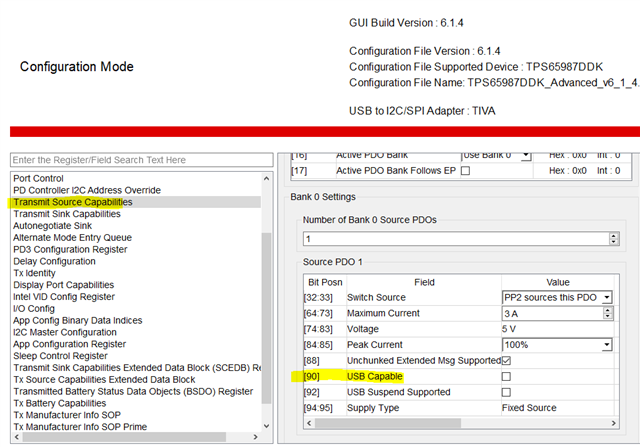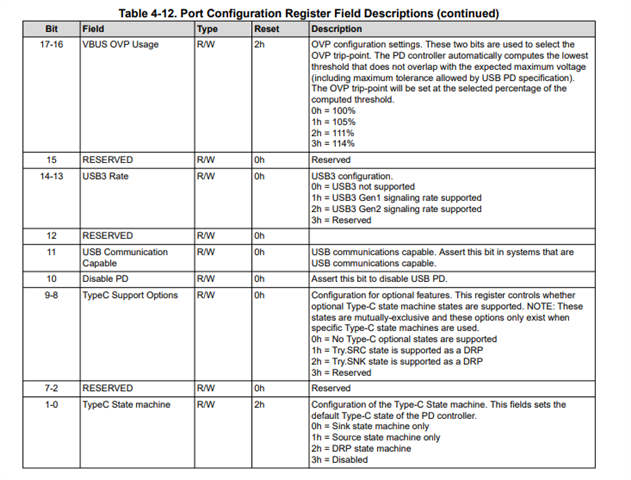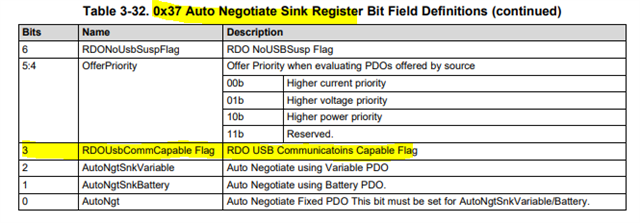Other Parts Discussed in Thread: TPS65987, TPS25751, TPS55288, BQ25758
Tool/software:
Hi,
we want to design a system where power and data roles are opposite. It means, USB-C PD Port will be configured as a Source (DFP), but at the same time it will feature either, USB 2.0 only or both 2.0/3.0 and it will be configured as Device (UFP). It is clear to me that CC lines are used to establish a valid source-to-sink connection and determine the attached device mode (source, sink or accessory). However, I can't figure out, how is determined, whether one USB-C PD port is USB Communications capable, and which role the port has, device or host.
Is this also negotiated over CC lines?
In the USB-C PD Standard there is a chapter 6.4.1.2.1.4 USB Communications Capable, that says: "The USB Communications Capable bit Shall only be set for Sources capable of communication over the USB data
lines (e.g., D+/- or SS Tx/Rx)." This means there should be some bits in the USB-C PD Controller, that should be set, either as Device or Host. In the presentation "USB Power Delivery, USB Developer Days 2019 – Taipei, Taiwan November 20, 2019" there is a chapter USB4TM: Enter USB info with a table. In that table there are bits like B25 that says whether the interface is capable of operating as a [USB 3.2] Device or not.
My question is, whether this information about USB Communications Capability is enclosed in every data sheets or TRM of power delivery controllers and how to search for the USB-C PD controller that supports this?
Is this information for example enclosed in 0x5F Data Status Register Bit Field Definitions for the TPS65987D?
Since TPS65987D has the NRND status, is there any replacement for this part?
BR
Josko




